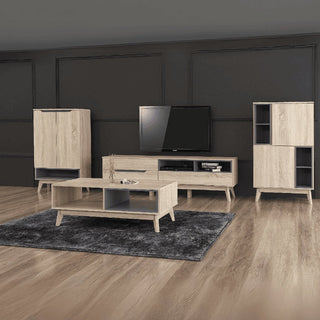Choosing the right mattress is crucial for achieving restful sleep and maintaining overall health. With a plethora of options available, understanding how your sleep style influences mattress selection can guide you toward the perfect choice. This comprehensive guide will delve into various sleep positions, mattress types, firmness levels, and additional factors to consider, ensuring you make an informed decision tailored to your needs.
Understanding Your Sleep Style

Your preferred sleep position significantly impacts the type of mattress that will provide optimal comfort and support. Let's explore the common sleep styles and the ideal mattress characteristics for each:
| Description | Recommended Mattress Type | |
| Side Sleepers | Side sleeping is the most common position, with about 60% of people favoring it. This posture can create pressure points at the shoulders and hips, necessitating a mattress that offers adequate cushioning. | Memory foam or hybrid mattresses are ideal as they contour to the body's curves, providing pressure relief and support. A medium to medium-soft firmness level (around 5-6 on a 10-point scale) is often suitable. |
| Back Sleepers | Back sleepers require a mattress that maintains spinal alignment without causing the lower back to sink. | A medium-firm mattress (around 6-7 on the firmness scale) offers a balance of support and comfort. Hybrid mattresses combining innerspring coils and foam layers can provide the necessary support and slight contouring. |
| Stomach Sleepers | Sleeping on the stomach can strain the neck and spine if the mattress is too soft. | A firm mattress (7-9 on the firmness scale) prevents the hips from sinking too deeply, maintaining spinal alignment. Latex or hybrid mattresses with firm support are beneficial. |
| Combination Sleepers | If you switch positions throughout the night, a mattress with balanced support and responsiveness is essential. | A medium-firm hybrid mattress offers versatility, providing support and comfort across various positions. Look for a mattress with good motion isolation and responsiveness to accommodate movement. |
Exploring Mattress Types

Understanding different mattress constructions can help you choose one that aligns with your sleep style and comfort preferences.
1. Memory Foam Mattresses
These mattresses conform closely to the body, offering excellent pressure relief and motion isolation. However, they may retain heat, so consider options with cooling features if you tend to sleep hot.
2. Innerspring Mattresses
Featuring coil support systems, innerspring mattresses provide a traditional feel with strong support and breathability. They may lack the pressure relief found in other types, making them less ideal for side sleepers.
3. Hybrid Mattresses
Combining innerspring coils with foam or latex layers, hybrid mattresses aim to offer the best of both worlds: support, responsiveness, and pressure relief. They are suitable for various sleep styles, depending on their construction.
4. Latex Mattresses
Made from natural or synthetic latex, these mattresses provide a responsive and bouncy feel. They are durable, naturally hypoallergenic, and offer good temperature regulation.
Determining the Right Firmness Level

Firmness preferences are subjective and influenced by factors such as body weight, sleep position, and personal comfort. Here's a general guideline:
-
Soft (1-3): Suitable for side sleepers under 130 pounds who need significant pressure relief.
-
Medium (4-6): Ideal for side sleepers between 130-230 pounds and back sleepers under 130 pounds.
-
Medium-Firm (6-7): Best for back sleepers between 130-230 pounds and stomach sleepers under 130 pounds.
-
Firm (8-10): Suitable for back and stomach sleepers over 230 pounds who require substantial support.
Additional Factors to Consider

Beyond sleep position and firmness, consider the following when selecting a mattress:
1. Body Weight: Heavier individuals may prefer firmer mattresses to prevent excessive sinkage, while lighter individuals might opt for softer options to ensure adequate contouring.
2. Temperature Regulation: If you tend to sleep hot, look for mattresses with cooling technologies, such as gel-infused foam or breathable covers.
3. Motion Isolation: For couples, a mattress with good motion isolation can prevent disturbances caused by a partner's movements during the night.
4. Edge Support: Strong edge support can make a mattress feel larger and prevent sagging when sitting or sleeping near the edge.
5. Trial Period and Warranty: Many mattress companies offer trial periods, allowing you to test the mattress at home. Ensure the mattress comes with a comprehensive warranty to protect your investment.
Conclusion
Selecting the best mattress for your sleep style involves understanding your sleeping position, exploring different mattress types, and considering factors like firmness, body weight, and personal preferences. By taking these elements into account, you can find a mattress that provides the comfort and support necessary for a restful night's sleep.
Disclaimer: This article is for informational purposes and should not replace professional medical advice. Consult with a healthcare provider for personalised recommendations.








